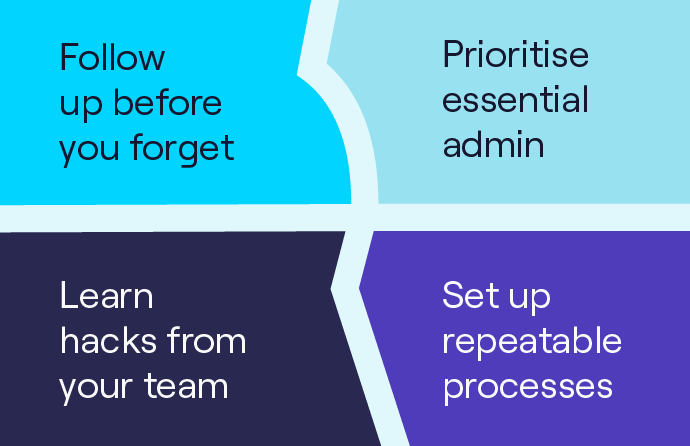Successful Global Expansion: Tactics for Entering New Markets
International expansion FAQs:
Businesses looking to scale rapidly increasingly turn to global markets, but international growth brings challenges.
The difference between a failed attempt and a successful international business expansion often lies in one thing: data. More specifically, international B2B data that’s accurate, compliant, and actionable.
In this article, we’ll...
- Unpack what a winning global expansion strategy looks like.
- Explore why B2B data is the backbone of global business expansion.
- Show how Cognism helps companies expand internationally with confidence.
Let’s start 👇
What is a global expansion strategy?
A global expansion strategy is a plan for scaling a business into new international markets. It includes identifying the right regions, aligning internal teams, localising offerings, and using data to drive decision-making.
It’s not just about entering new geographies - it’s about doing so strategically, with a strong foundation of insight, readiness, and scalable infrastructure for long-term business growth.
What are the challenges of international business expansion?
Expanding into international markets often means dealing with different languages, distinctive cultures, and slightly different ways of operating.
It’s much easier to say, ‘Let’s expand into emerging markets,’ than to do so in practice. Why?
Because they’re too different! You can’t use the same business strategies and messaging in every country.
Your international business expansion strategy can’t be copied and pasted into your current GTM strategy. Just because it worked in one territory doesn’t mean it’ll work in another.
One example is the foreign expansion of the Chevy Nova, a very popular car in the United States.
Chevrolet decided to bring the car to a Spanish-speaking audience.
What they hadn’t considered, however, was how the car’s name translated into Spanish…
No = No
Va = Go
Unsurprisingly, the car wasn’t hugely popular in Spain!
Now, you might think that’s a silly reason for a car to fail in a foreign market - and who knows if that’s why the car didn’t perform well.
However, the main point here is that many cultural nuances can impact the success of your international business expansion strategy, depending on native perception.
You can’t make assumptions about what will or won’t work for your business in a new environment.
Regional GTM strategies require special thought due to the following:
- Market maturity.
- Process sophistication.
- Language differences.
- Cultural expectations.
- Legal practices.
But taking a business global isn’t as simple as replicating your domestic success either. There are several complex hurdles to clear, including:
- Market complexity: What works in one region may fall flat in another.
- Regulatory environment: Navigating the GDPR, CCPA, and local data laws is no small feat.
- Cultural nuances: From language to buyer behaviour, every market is unique.
- Sales and marketing alignment: Even the best GTM motions can fail without accurate targeting.
Each challenge amplifies the need for reliable, localised, and compliant data.
Are you expanding? Check out Cognism’s International Expansion Zone 👇
Why is international B2B data critical for success?
Leveraging B2B data when expanding a business internationally has many advantages.
With data, you can easily navigate unfamiliar foreign markets and get precise insights to identify potential partners, clients, and growth opportunities.
Using quality B2B data helps reduce prospecting time, minimise costs, and support the development of new products and strategies. It fuels every stage of global expansion and enables your team to:
- Conduct market research and validate market demand before entry.
- Build targeted prospecting lists that match your ideal customer profile.
- Localise messaging to resonate with regional buyers.
- Comply with regulatory requirements, protecting your brand reputation.
Without high-quality B2B data, your expansion efforts become guesswork. A risk that fast-growing businesses can’t afford.
How do you expand a business internationally?
International market expansion presents a significant growth opportunity for your business.
But how do you know if you’re ready to move into new global markets?
Liam Bartholomew, Cognism’s VP of Brand and Customer Marketing, said:
“The main thing to look for is demand. Before we expanded into new European regions, we’d notice that a percentage of our opportunities and inbound were coming from this place.”
“It was slightly different when we first expanded into France. We purchased Kaspr, which was an already established business in France. So we knew there was already market potential for us.”
“And when we decided to move into DACH, one of the main motivators was a lack of competitors.”
“But as soon as there’s a sign that there’s demand, that’s a big reason to look into moving.”
Here are a few signs to consider:
- A significant or growing portion of your conversions comes from an international audience.
- Entering the global market can help generate new revenue streams.
- The domestic market is becoming saturated, and economic growth is plateauing.
- You’re in a healthy financial position, with substantial profits and positive cash flow (global business expansion requires an upfront investment, and having financial stability will be crucial for navigating initial challenges!).
- Your current operations are running smoothly and efficiently. Your existing business is well-established and can handle the additional demands of growth.
Top tip: Try Cognism
You must have a trustworthy data provider to reach out to target leads.
In addition to Cognism, companies like ZoomInfo, Lusha, and Kaspr can offer you the best data for international expansion.
Here’s the proof:
Promon used Cognism to expand into South America successfully. They saved ten hours of weekly administrative activities. They said:

Business Development Representative @Promon

Cognism is the trusted data partner for companies expanding into new territories. We offer:
- GDPR and CCPA-compliant data - no legal grey areas.
- Global coverage that includes EMEA, NAM, and APAC.
- Accurate, mobile-verified contacts to fuel your outbound.
- Real-time signal and intent data to pinpoint timing.
Whether you’re entering a new market or doubling down in one, Cognism ensures your revenue teams are targeting the right accounts, in the right way.
What are the steps for building an international expansion strategy?
Leveraging B2B data for international business requires a comprehensive approach.
Here are eight strategies to use B2B data for the utmost success:
1. Research the top countries for international expansion
It’s easy to say you’ll move into a new region - but where?
Once you’ve chosen a new country, how do you confirm if it’s the right choice for your business model?
Liam said:
“You must carry out lots of market research before you leap into global business expansion.”
B2B sales data offers insights into market trends, consumer behaviour, and industry competition. By analysing this data, you can identify the best countries for business (AKA the global expansion index) and uncover essential geographical insights into your new market.
Here are some examples of research data needed for international expansion:
- Market share and size.
- Regional competitors.
- Market dynamics.
- Expected growth rates.
- Expected revenue.
The first thing to do is thoroughly research your target market. Many companies hire a research firm to help them do this, but you can also invest in sales intelligence tools that offer data insights.
Liam suggested a way to test out a new market before making the jump:
“We sometimes run ‘R&D spend’ - as we call it - in different countries, and when they hit certain benchmarks, i.e. x number of opportunities from a country based on the small amount of spend, then that’d trigger a threshold for expansion.”
Opportunities for business expansion start with an in-depth opportunity analysis 👇
Opportunity analysis
- Is there a genuine opportunity in this region that can drive sustainable growth?
- Can you be successful by putting resources here?
- Do the people in this new region operate in the same way as your ICP at home?
- Do they have the same pain points?
- Is there product-market fit? Would they use your product in the same way?
At Cognism, this was key when expanding into DACH. Liam explained with this example:
Another example:
“In DACH, you need double opt-in consent to email someone. Therefore, the email data available in the Cognism platform isn’t compliant for them to email in DACH.”
“Pushing how Cognism has email data in DACH wouldn’t make any sense. So focusing on phones, mobile data, and enrichment makes more sense.”
You could use the Cognism product for a demand gen approach. Create contact lists in your ICP and target them with relevant content.
However, if marketers in Germany or France are still more focused on lead gen, messaging about demand gen wouldn’t make much sense.
ICP interviews in your new region are imperative for building your international business expansion strategies. There’s no space for assumptions.
How would your product fit into their working lives, and does that match how you currently market your product?
Is there a way to market your product so that it does appeal to their particular circumstances?
Liam gave us some questions you should ask your ICP during these exploratory interviews:
- Where would you go for your information if you’re having a problem with (insert problem you solve here)?
- What tools are you using for x, y and z?
- What does your current workflow look like?
- What content do you like to consume?
- What are the main challenges in your role?
- How would you like to be marketed to?
In general, though, you need to build your ICP in new regions from scratch.
If your interview results indicate demand for your products or services in this new region, and there’s a gap in the market that your company can fill, it’s a positive signal for international business expansion.
2. Calculate your TAM
Calculating your total addressable market (TAM) will help you understand the size of the opportunity in a given market. It also helps you make informed decisions about resource allocation, marketing strategies, and growth potential.
Segmenting the market and understanding the potential demand for your product or service can help you set realistic growth targets.
👉 Need help defining your TAM? Cognism has a free TAM calculator to help you do this.
3. Conduct a competitive analysis
As discussed above, your business is looking to find a gap in the market and provide a competitive edge.
Hopefully, that means there’s not a lot of competition - but in an increasingly competitive world, having no competition is becoming increasingly rare.
Liam said:
“You should look to pin down your competitors in the market. What are they charging? What do they offer? Who are they targeting? How could you position yourself in the market next to them to stand out?”
Here are some steps you can take to understand your rivals:
Identify key competitors
Begin by identifying your direct and indirect competitors in the international market. Look for companies offering similar products or services within your industry.
Create a list of ones you want to keep an eye on. Also, continue to watch for future market entrants.
Understand market dynamics
Analyse the global market conditions and dynamics in the countries you want to expand into.
Consider factors such as market size, growth trends, and any challenges or opportunities unique to the region.
Segmentation and target audience
Break down the market into customer segments and identify your target audience within each segment.
Take the time to deeply understand these segments’ preferences and needs. Then, you can tailor your international marketing strategies effectively.
Product or service differentiation
Evaluate how your products or services differ from those of your competitors. This is an integral part of your international business expansion strategy.
Identify unique selling propositions (USPs) that can give your business a competitive advantage.
How can you make yourself different from others in the market?
In other words, why would customers choose you?
Pricing strategies
To lock down pricing, ask yourself these questions:
- What prices are your competitors charging?
- Do they have similar products for a similar price point?
- How does your pricing compare?
- Does it align with the market norm?
Marketing and branding
Study your competitors’ marketing and branding strategies. Use any insights to craft your own branding and marketing messages that appeal to local cultures.
Examine their online and offline presence, messaging, and positioning. What are the strengths and weaknesses in their marketing approaches?
Also, study successful marketing in this country in general. What are the common themes of things that work? This will inform your international strategy.
4. Understand the laws and regulations
There are strict compliance rules for using personal data across countries. B2B data users must adhere to these business regulations.
For example:
Depending on the country, using data for unsolicited marketing emails without proper consent might violate local laws. You must be aware of these restrictions to avoid legal issues.
Liam said:
“Like I mentioned earlier about how our email data isn’t compliant in DACH due to their strict double opt-in rules - there might be ways in which you’re operating in other jurisdictions that you can’t do in this new region.”
“You must ensure that you comply with all the local laws before you start selling.”
For instance, if you operate in Germany, you must guarantee that your German business data never leaves the country.
Each country applies these privacy laws slightly differently, and we had to consider these legal practices when expanding into Europe.
These include:
- GDPR and data protection.
- Employment legislation.
- Corporate taxation rates.
When choosing a B2B data provider, check if they comply with the regulations of the country where you want to source contacts.
For example, Cognism offers GDPR-compliant data, SOC2 type II certification, ISO 27001 and ISO 27701 certificates. Also, it screens all its phone numbers against:
- TPS/CTPS lists in the UK.
- Do-Not-Call lists in the USA, Canada, Australia and European countries, including Germany, France, Spain, Ireland, Belgium, Croatia, Portugal, Sweden and more.
Choosing a data provider that offers comprehensive, up-to-date B2B data tailored to your target countries is crucial for global expansion. As our customer, Cloudreach, told us:
“A core reason for unlocking the Cognism conversation was its compliant reputation. During the sales process, the legal team spoke with Cognism’s compliance team.”
“They were very impressed that Cognism is dedicated to maintaining ISO 27701 and SOC2 frameworks. It was evident that security is a top priority, so the needle moved faster in the sales process.”
“All outbound leads stem from Cognism’s data. Our indirect pipeline contribution from this vertical is 30% in Southern Europe.”

SDR Manager @Cloudreach

Corporate tax laws
This is a biggy; if done wrong, it can lead to financial penalties and other punishments that we’d all rather avoid!
Each European country will have its own laws and regulations for businesses operating within it, leading to different tax rates.
Malta, for example, has the highest combined corporate income tax rate, reaching 35%.
Hungary has the lowest combined corporate income tax rate, at just 9%.
Liam warned:
“Even if you’re selling remotely into a region, you might be liable to pay VAT or sales tax.”
Engaging with legal professionals familiar with the specific jurisdictions you’re entering is essential to ensure a smooth and legally compliant expansion into Europe.
5. Create a process for hiring talent
One of the most important things you need when expanding internationally is local knowledge and industry-specific talent.
If the Chevrolet example has taught us anything, it’s that it pays to understand the local culture and language.
Jonathon Ilett, Cognism’s former VP of Global Sales, said:
“Your base should be around the available talent pool. Where are the hubs for talent in those regions, and are they accessible? That’s the key one for me.”
And we don’t just mean local tour guides or translators who know the area.
We mean local experts in your niche. You need someone who understands your target market, their problems and needs.
Who can advise you on whether or not your messaging will resonate well in the region?
If we hadn’t had this local expertise early on in our expansion into Germany, for example, it would have taken us a lot longer to realise that the German B2B buyer journey was a few years behind the UK in terms of development.
That meant when we expanded into Europe, we could adapt our business strategy to reflect this, saving us time, resources, and stress!
So, when it comes to international business expansion, the first thing on your list should be talent acquisition. Ask yourself:
‘Can we get the right people on the ground to get our GTM motion off to a solid start in this region?'
Jonathon said:
“Focus on the skills they have rather than the title; people who do similar jobs and responsibilities might be called something different to what you’ve heard them called.”
“A top tip for hiring in Germany: almost all first-time hires in entry-level positions are still doing their degree. So if you’re hiring SDRs in a new region, it’s good to partner with universities to get the talent.”
In other words, job titles might not match those you’re used to. For example, CROs are super common in the States, but are only starting to pop up in Europe.
This boils down to researching and being prepared before starting your international business expansion. You want to understand the region you’re moving into as much as the one you’re moving from.
Employment legislation
Employment law can also be complicated and is more likely to vary from country to country. Cognism had to consider this when expanding into countries such as France.
Liam advised:
“You should get professional advice before you hire in a new place. Some countries have much stricter rules on what you’re allowed to do regarding hiring and firing.”
For example:
In the Netherlands, unilaterally ending a permanent employment contract is prohibited.
As a result, most employment agreements in the country are typically agreed as fixed-term contracts rather than indefinite ones.
And in the UK, notice periods for terminating employment are generally shorter than in other European countries. It’s common for employers and employees to provide one to three months’ notice.
In Germany, notice periods can be longer. The standard notice period is four weeks, but this can extend based on an employee’s length of service, reaching up to seven months for long-term employees.
Another thing to consider is that employees can set up workers’ councils in some countries, like Germany.
A workers’ council consists of elected staff members who can influence workers’ rights and compensation, such as increasing wages and improving workplace conditions.
Employers are legally bound to give these workers’ councils information, and they have a right to negotiate new terms.
5. Developing a localisation strategy
When it comes to expanding into new regions, the most crucial aspect of localising your international business expansion strategy is this:
It’s about more than just translating your content into another language. As Liam said:
“Translating content will only get you so far. It’s about creating regional-specific content. Content written specifically for the needs, pain points and circumstances in that place in the language they speak.”
In other words, you’re not just publishing the same things you do for your domestic market.
There’s no guarantee that what worked there will work in your new target market. You want to establish an international presence.
At Cognism, we’ve created regional-specific content and marketing materials focused on the needs, pain points, customer preferences, and circumstances of the regions we are targeting in the languages they speak.
That means you need to refer back to your research before the move. What did you find out about your ICP in this country?
Then, create dedicated content and marketing strategies to reach those customer bases.
Yes, it’s more work, but you’re far more likely to succeed when speaking directly to the people you want to target.
In that same vein, you equally can’t assume that the channels you used before will be the right channels in this new country.
Liam said:
“Different countries will have different variations of channels. For example, in DACH, there’s Xing, a competitor to LinkedIn.”
“Some countries use different search engines. Google isn’t as dominant as it is in the UK.”
“Again, speak to customers. Find out where they get their information and content. Where do they spend their time inside and outside of work?”
6. Build strategic partnerships and collaborations
Cultural differences can be nuanced and aren’t necessarily written down in a textbook. Arguably, this is even more complicated than the previous points regarding international business expansion.
Understanding cultural norms is essential to avoid accidentally alienating people in a new region and business environment, whether they’re those you wish to employ or those you hope to sell to.
For example:
When Cognism expanded into Europe, we found that when it came to outbound sales, communication styles in Germany and Switzerland often tended to be more direct and to the point.
However, a more indirect and nuanced approach is more common in France and Spain. And British audiences generally appreciate a process that builds business relationships.
Realistically, this takes time to learn. However, you can speed up this process by bridging the gap with native speakers and international partnerships.
Jonathon said:
“Whenever we expanded into a new country, we always had a leader on the ground who had experience selling into that region. Rather than trying to cookie-cut what we have working in the UK or the US.”
“In other countries, people have different workflows and ways of communicating. And the whole buying process is just different. So you need that local expertise.”
International business data helps you identify potential clients; it opens doors for partnerships and collaborations.
Use it to identify companies that could be strategic partners or distributors in your new market. Building local partnerships can provide valuable insights and enhance credibility.
For example:
A local trade partner can explain language differences, purchasing habits, and cultural aspects you might not know. Then, you can customise your offering to be welcomed while avoiding any pitfalls or controversial slip-ups.
When organising events such as webinars, talks, or podcasts targeted at your audience, find local partners to co-host.
Partnering with local organisations (not direct competitors) targeting the same audience can drastically impact how your new audience views your brand.
7. Tailor your marketing and sales approach
Data is an excellent way to craft personalised marketing and sales approaches for each target market.
Leverage the insights from your marketing data to understand the preferences, pain points, and communication channels that resonate most with potential clients.
Look at:
- Demographic data.
- Firmographic data.
- Techhnographic data.
- Chronographic data.
- Intent data.
All these data types can help you tailor your messaging, from cold emails and ABM campaigns to paid ads and cold calling scripts.
Aligning messaging
Effective product messaging for a go-to-market sales strategy boils down to this:
Communicating the value of your product or service to your ICP in a way that resonates with their pain points.
Start by listening to Gong recordings of sales demos with prospects. Alternatively, shadow your sales reps as they make live calls.
Pay attention to the language your prospects use about their pain points and ambitions.
In Gong, you can also search for specific competitor names and review how prospects perceive them.
You can support this by incorporating words and phrases from case studies or G2 reviews into your messaging.
Next, you must understand your competitors’ messaging on their sites and review how they position their product offerings.
This info lets you define your USP and how it compares to the competition.
Once you have this, you need to develop a brief for executives, including the key takeaways about your competitors’ positioning compared to yours.
You must lay out which personas you’ll speak to and how to address them here.
Finally, to set your messaging in stone, organise a call with key company executives and come to an agreement.
8. Set up operational processes
When it comes to international business expansion and establishing a physical presence in new countries, there are a few things you need to consider from an operational perspective.
Many expanding businesses often encounter challenges when managing customer data, processes or communication. Operating with multiple systems can create data silos and lead to inconsistencies and inaccuracies.
That’s why setting up your CRM correctly is key.
At Cognism, we made a considerable effort to sketch out our ideal customer journey flow in our CRM. The key was understanding the buyer’s journey from the start, when a prospect first learned about Cognism through marketing, to the sales process, and then to customer success.
Cognism created an authoritative source of truth for all our GTM teams, including dashboards for all ICs, managers, regional heads, and global leaders, based on the region/role matrix we have in our Salesforce.
When starting, you first want to define your different roles and job titles in Salesforce.
As Antoine Cornet, Cognism’s Head of Revenue Operations, explained:
“If you’re a UK SMB AE, that will be different to a mid-market AE in France, so setting those role definitions up to compare your team’s performance is important.”
You also want to set the right team quotas and ensure capacity planning is in place.
This means understanding how much revenue your territory is currently generating and your growth expectations. This information can guide which resources you’ll pour into those regions and help you map your hiring plan.
Next, you need to set up your routing rules, establish which MQLs get routed to which representatives, and craft books of business for your AEs and SDRs.
As Antoine also explained:
“You want to perform a territory-sizing exercise in your CRM. This means defining your ICP and the number of accounts that fall within it so people can focus on the best-fit accounts.”
How do you measure international business expansion success?
How do you know if you’re on the right track with your international business expansion strategy and achieving your business goals?
Senior leadership and other stakeholders will undoubtedly be keen to see this venture succeed. So, how can you measure performance and report back?
Liam said:
“The hardest part is setting yourself benchmarks to begin with - but you just have to estimate what success might look like at each stage of your business expansion.”
“Look at the market’s maturity, how many competitors there are, whether or not people are solution-aware and problem-aware.”
“If you have one to compare to, compare it to a market you’re already in. And work out your best guesses on your cost per SQO and cost per lead. Then you can decide what your business targets should be.”
“Then it’s pretty similar to your measurements back home. Looking through the funnel and at your key performance indicators.”
“How many inbound demo requests are you getting? How many meetings are booked and attended? And then also looking at your engagement metrics.”
What pipeline and revenue targets are realistic based on all the related factors?
Another vital thing to measure when trying to establish a brand internationally is brand awareness, recognition, and association with that brand.
Drew Leahy, Founder of Peanut Butter Comms, said:
“If you have, say, five associations you want people to have about your brand, and you want to find out how you measure up to them right now, go out and find a baseline.”
Ask your customer base and your prospective buyers questions about:
- What do they think you sell?
- What words would they use to describe your business?
- What are the reasons they think someone might buy from you?
- What content or adverts have they seen from you that they recall?
Use this knowledge to build a campaign to improve how people perceive your brand.
You should also ask your customers again in 6-12 months; you may discover something different.
Here are some of the results we’ve seen here at Cognism when expanding into Europe:
- The French region is scaling quickly, considering we’ve only been in this region for a year or so.
- The Top Flop webinar started with 65 registrants and 31 attendants in October. Now, we have around 250 registrants and 100 more attendees than in March and April.
- MQLs at 229% of target.
- Pipeline at 304% of target.
- And revenue at 329% of target.
Using data for global expansion: Key takeaways
A well-executed global expansion strategy can unlock huge growth, but only if it’s powered by the right data.
You must invest in high-quality data to provide better services, improve the customer experience, and optimise production.
It allows organisations to improve decisions, manage sales and marketing campaigns, and develop winning global market entry strategies.
With Cognism, you’ll gain the international B2B data you need to enter new markets, engage the right buyers, and scale revenue globally, all while staying compliant.
Ready to go global with confidence? Get a Cognism data sample or learn more in our Expansion Zone 👇
Where to get B2B data for business expansion?
Global expansion is almost doomed to fail without access to B2B data. So, which provider should you choose?
Here’s what makes Cognism stand out:
- Sales Companion for personalised access to in-depth account data to ensure fresh and fast outreach.
- Phone-verified cell phone numbers to help you connect with 87% of your list.
- Exclusive on-demand verified cell phone and email data set Diamond Data®.
- Intent data by Bombora.
- International coverage: EMEA, NAM, APAC.
- Easy platform setup.
- Integrations with CRMs and sales engagement tools.
- Focus on quality GDPR and CCPA-compliant data.
- Database checked and cleaned against global DNC lists.
- Find prospects using ChatGPT-style textual or voice prompts with Cognism AI Search.
- Fast and friendly support team.
Look no further! Choose Cognism as your data provider for global expansion 👇
.webp?width=1376&height=528&name=EN_International%20Expansion%20Zone%20banner%20CTA%20(1).webp)
/Miscellaneous%20Images/Targeted-sales-prospecting-Infographic.webp?width=672&height=672&name=Targeted-sales-prospecting-Infographic.webp)
.webp?width=1376&height=528&name=EN_International%20Expansion%20Zone%20banner%20CTA%20(2).webp)


